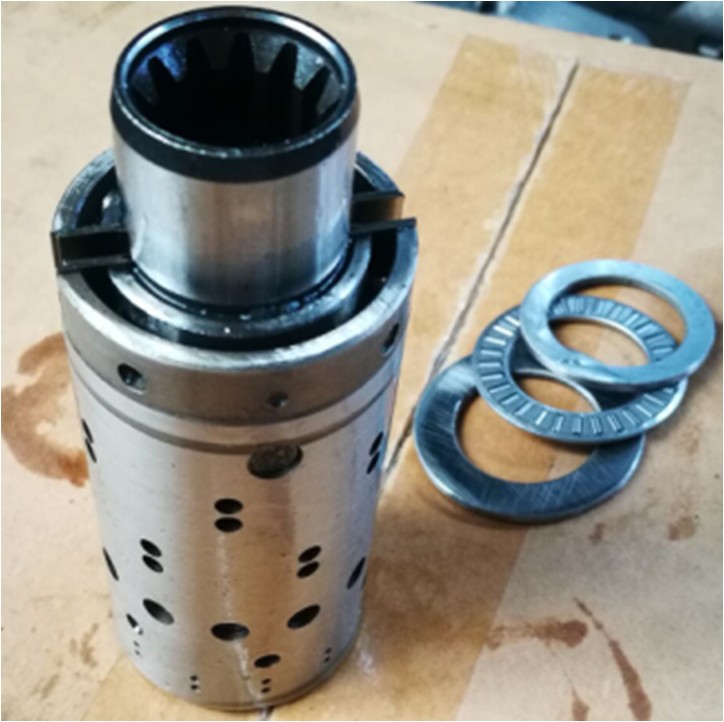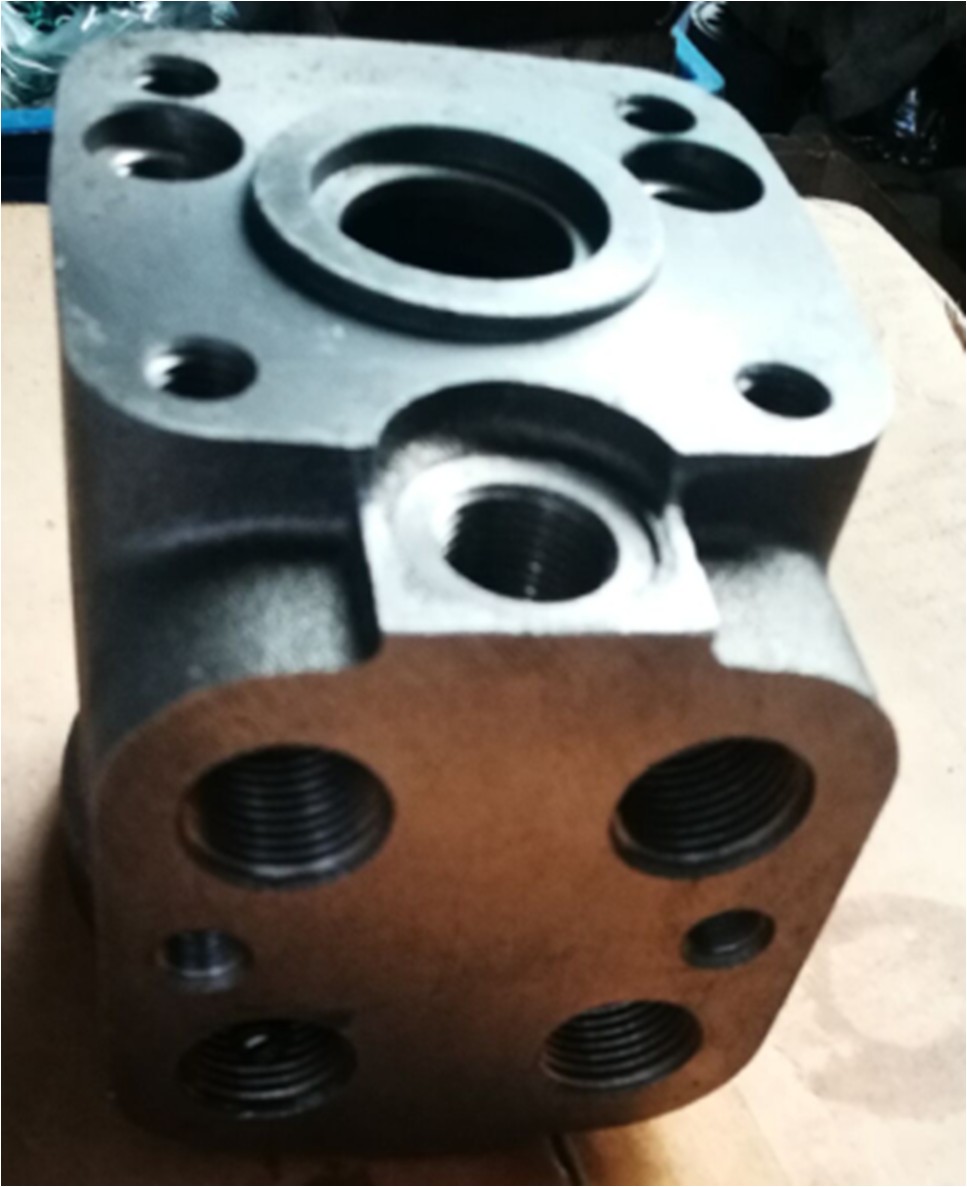Introduction of hydraulic steering unit
Hydraulic steering unit: namely hydraulic power steering unit. The steering unit (also often referred to as the steering unit) is a set of gear mechanisms that completes the rotation from the rotation to the linear motion (or approximately linear motion), and it is also the deceleration transmission device in the steering system. It is the most important component in the steering system. Its function is to increase the force transmitted from the steering wheel to the steering transmission mechanism and change the direction of force transmission.

The hydraulic steering unit is a cyclonical rotary valve type full hydraulic steering unit composed of a follow-up rotary valve and a cyclonical rotary stator pair. It is a full hydraulic steering system composed of fuel supply pumps, overflow valves (or diverter valves), steering cylinders and other connecting accessories. It is widely used in agricultural machinery, shipbuilding machinery, garden machinery, road maintenance machinery, forestry machinery, engineering machinery and On low-speed and heavy-duty vehicles such as mining machinery. Through it, the driver can achieve greater steering force control with a smaller operating force, and the performance is safe and reliable, and the operation is light and flexible. Happy type: When the steering unit is in the neutral position (not steering), the fuel supply pump communicates with the fuel tank. A fixed hydraulic pump is used in the open-heart steering system. The closed center steering unit is in an open circuit state (closed core), that is, when the steering unit is not working, the hydraulic oil is cut off by the steering unit, and the steering unit inlet has a higher pressure. The pressure-compensated variable pump is used in the closed-core steering system. The load-sensing steering device can transmit the load signal to the priority valve, and the flow rate required by the steering system is preferentially controlled through the priority valve. According to the control mode of pressure sensing signal, it is divided into dynamic sensing type and static sensing type. Load loop response type: When the steering unit is in the neutral position, that is, when the driver is not steering the vehicle, both sides of the steering cylinder are directly connected to the cycloid pair, and the external force on the steering cylinder can be felt on the steering wheel. Non-responsive type: When the steering unit is in the neutral position, that is, when the driver is not steering the vehicle, the two cylinders are cut off, and the steering wheel cannot feel the external force on the steering cylinder.
The working principle of hydraulic steering unit
Hydraulic steering unit: namely hydraulic power steering unit. The steering unit (also often referred to as the steering unit) is a set of gear mechanisms that completes the rotation from the rotation to the linear motion (or approximately linear motion), and it is also the deceleration transmission device in the steering system. It is the most important component in the steering system. Its function is to increase the force transmitted from the steering wheel to the steering transmission mechanism and change the direction of force transmission. The hydraulic steering unit is a cyclonical rotary valve type full hydraulic steering unit composed of a follow-up rotary valve and a cyclonical rotary stator pair. It is a fully hydraulic steering system composed of fuel supply pumps, overflow valves (or diverter valves), steering cylinders and other connecting accessories. It is widely used in agricultural machinery, shipbuilding machinery, garden machinery, road maintenance machinery, forestry machinery, engineering machinery and On low-speed and heavy-duty vehicles such as mining machinery. Through it, the driver can achieve greater steering force control with a smaller operating force, and the performance is safe and reliable, and the operation is light and flexible.


Classification of hydraulic steering unit
The steering unit can be divided into many types according to the structure. At present, the more commonly used are rack and pinion type, worm crank pin type, circulating ball-rack and pinion type, circulating ball crank pin type, worm roller type and so on. According to the power-assisted form, it can be divided into mechanical (no power-assisted) and power (power-assisted). Among them, power steering unit can be divided into pneumatic power type, hydraulic power type, electric assist type, electro-hydraulic assist type, etc.
(1) Rack and pinion steering unit
The rack and pinion steering unit is one of the most common steering units. Its basic structure is a pair of pinions and racks that mesh with each other. When the steering shaft drives the pinion to rotate, the rack becomes a linear motion. Also, if the grilled wings modulates to drive the tie rod, you can turn the steering unit. Therefore, this is the simplest type of steering unit. Its advantages are simple structure, low cost, flexible steering, small size, and it can directly drive the tie rod. It is widely used in automobiles.
(2) Worm crank pin type steering unit
Worm-crank finger-pin type steering unit is suitable for the steering unit with the worm as the driving part and the crank pin as the driven part. The worm has a trapezoidal thread, the finger-shaped tapered pin is supported on the crank with a bearing, and the crank is integrated with the steering unit rocker shaft. When steering, the worm is rotated by the steering wheel, and the tapered pin embedded in the spiral groove of the worm is auto-transmitting while making a circular motion around the rocker shaft, thereby driving the crank and the steering vertical arm to swing, and then turning through the steering transmission mechanism. Wheel deflection. This kind of steering unit is often used in a truck with a relatively large steering force.
(3) Circulating ball steering unit
Circulating ball type: This kind of steering device uses a gear mechanism to decelerate the rotational force from the steering wheel, so that the rotational motion of the steering wheel becomes the rotational motion of a turbine worm. The ball screw and nut sandwich the steel ball to mesh, so the ball screw is The rotation motion becomes linear motion, the nut meshes with the sector gear, and the linear motion becomes rotary motion again. The link arm shakes, and the link arm makes the tie rod and the cross tie rod move linearly to change the direction of the gear. The principle of the circulating ball steering unit is equivalent to use the relative movement of the nut and the bolt during the rotation process, and the steel ball is clamped between the thread and the thread to reduce the resistance. All the steel balls are connected end to end in a closed spiral loop rolls in the curve, hence the name of the loop ball.
(4) Rack and pinion hydraulic power steering
The rack-and-pinion hydraulic power steering unit is relative to the rack-and-pinion mechanical steering unit. It mainly adds steering oil pump, steering oil pot, steering oil pipe, steering valve, steering cylinder and other components in order to improve the driver’s feel to increase the steering device for the purpose of steering assist.

- Previous article: What are the components of a hydraulic motor

 中文
中文 English
English Español
Español Français
Français